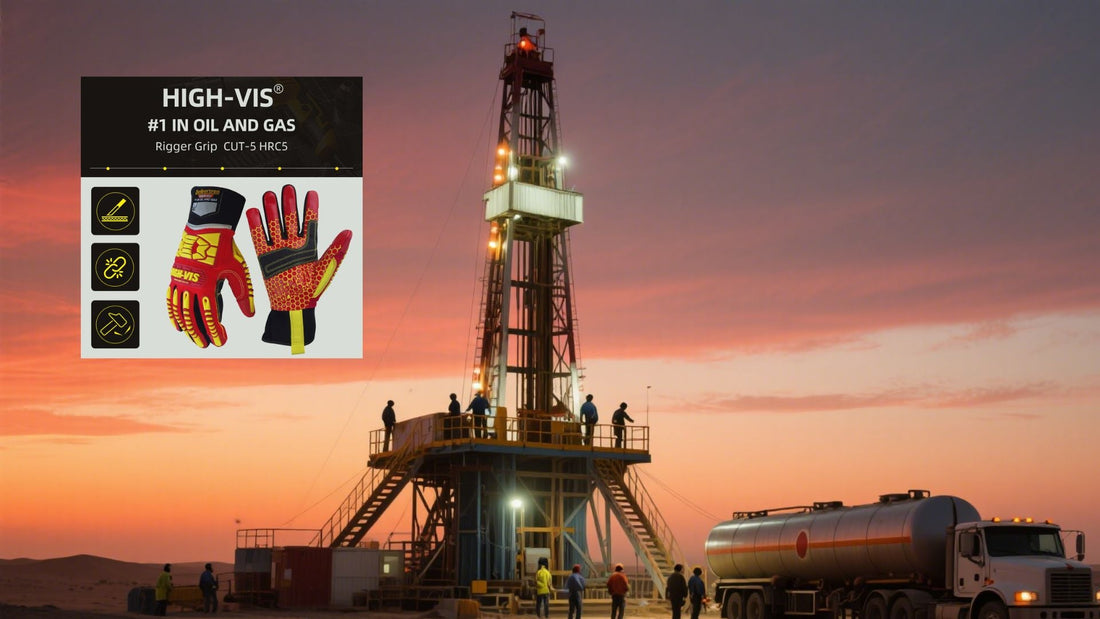Do Heavier Gloves Do Less Damage?
The question of whether heavier gloves do less damage is common among workers seeking the best hand protection. While heavier gloves often provide more padding and impact resistance, the relationship between glove weight and protection is nuanced. This article explores how impact protection gloves function, the balance between protection and dexterity, and why Seibertron work gloves like the Heavy Duty Utility Mechanic Rigger Glove and Hi-Vis Oil and Gas Gloves offer optimal safety without compromising usability.
Understanding Impact Protection Gloves
Impact gloves are designed to absorb and disperse forces from blunt impacts, reducing injuries such as fractures, bruises, and nerve damage. They typically feature Thermoplastic Rubber (TPR) padding on knuckles, fingers, and the back of the hand, which cushions blows and spreads impact energy over a larger area.
Does Weight Equal Better Protection?
Heavier gloves generally contain more padding and thicker materials, which can enhance impact absorption. However, excessively heavy gloves may reduce dexterity and grip, increasing the risk of accidents due to loss of control. The key is to find a balance where gloves provide sufficient protection while allowing comfortable movement and grip.
Trade-offs of Heavier Gloves
- Pros: Increased padding, better shock absorption, higher ANSI/ISEA impact ratings.
- Cons: Reduced flexibility, increased hand fatigue, potential for decreased grip strength.
Workers who remove gloves due to discomfort or reduced dexterity expose themselves to greater risk. Therefore, gloves like Seibertron Heavy Duty Utility Mechanic Rigger Glove are engineered to optimize protection and comfort.
Seibertron Gloves: Protection Without Compromise
Seibertron’s Heavy Duty Utility Mechanic Rigger Glove and Hi-Vis Oil and Gas Gloves feature advanced TPR padding and reinforced palms that provide high-level impact protection while maintaining flexibility and grip. These gloves meet ANSI/ISEA 138 standards and are designed for heavy-duty use in demanding environments.
Choosing the Right Glove Weight for Your Needs
Consider the following when selecting gloves:
- Task requirements: High-impact tasks may require heavier gloves.
- Dexterity needs: Precision work benefits from lighter, flexible gloves.
- Comfort and wear time: Gloves worn for long periods should balance protection and comfort.
Seibertron offers a range of gloves to suit different needs, ensuring you don’t sacrifice safety for comfort or vice versa.
Conclusion
Heavier gloves can offer better impact protection, but too much weight may hinder dexterity and increase fatigue, potentially causing more harm. The best gloves, like those from Seibertron, provide a balanced combination of protection, comfort, and usability, making them ideal for industrial and oil and gas work environments.
Q&A: Do Heavier Gloves Do Less Damage?
Q1: Do heavier gloves always provide better protection?
Not always. While heavier gloves often have more padding, too much weight can reduce dexterity and grip, increasing accident risk.
Q2: What is the role of TPR padding in impact gloves?
TPR padding absorbs and disperses impact forces, protecting bones and soft tissues without sacrificing flexibility.
Q3: Are Seibertron gloves heavy and bulky?
No, Seibertron gloves balance protection and comfort, offering durable impact resistance with ergonomic design.
Q4: Can heavy gloves cause hand fatigue?
Yes, heavier gloves can increase fatigue if worn for long periods, which is why balanced design is important.
Q5: Where can I buy high-quality impact gloves?
You can buy Seibertron work gloves online, including Heavy Duty Utility Mechanic Rigger Gloves and Hi-Vis Oil and Gas Gloves.
Explore the Seibertron High-Vis Work Gloves Collection for durable, comfortable, and effective impact protection gloves.

